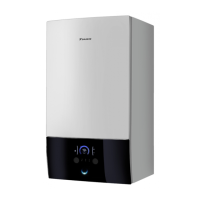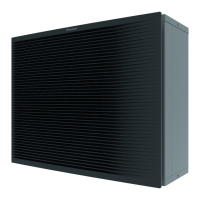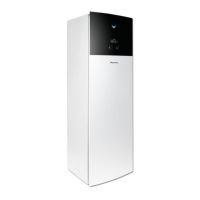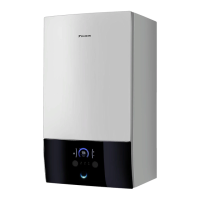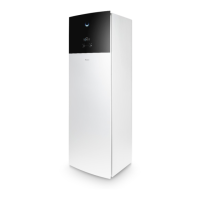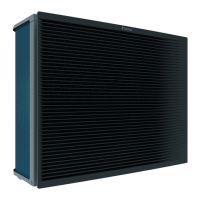8 | Piping installation
Installer reference guide
59
EPGA11~16DAV3(7) + EAVZ16S18+23DA6V(7)+9W
Daikin Altherma 3 H F
4P556075-1A – 2021.09
8 Piping installation
In this chapter
8.1 Preparing water piping ........................................................................................................................................................... 59
8.1.1 Water circuit requirements ................................................................................................................................... 59
8.1.2 Formula to calculate the expansion vessel pre-pressure...................................................................................... 62
8.1.3 To check the water volume and flow rate............................................................................................................. 62
8.1.4 Changing the pre-pressure of the expansion vessel ............................................................................................. 65
8.1.5 To check the water volume: Examples .................................................................................................................. 65
8.2 Connecting water piping ........................................................................................................................................................ 66
8.2.1 About connecting the water piping ....................................................................................................................... 66
8.2.2 Precautions when connecting the water piping.................................................................................................... 66
8.2.3 To connect the water piping.................................................................................................................................. 66
8.2.4 To connect the recirculation piping....................................................................................................................... 69
8.2.5 To fill the water circuit ........................................................................................................................................... 70
8.2.6 To protect the water circuit against freezing ........................................................................................................ 70
8.2.7 To fill the domestic hot water tank........................................................................................................................ 73
8.2.8 To insulate the water piping .................................................................................................................................. 73
8.1 Preparing water piping
8.1.1 Water circuit requirements
INFORMATION
Also read the precautions and requirements in the "2 General safety
precautions"[410].
NOTICE
In case of plastic pipes, make sure they are fully oxygen diffusion tight according to
DIN4726. The diffusion of oxygen into the piping can lead to excessive corrosion.
▪ Connecting piping – Legislation. Make all piping connections in accordance with
the applicable legislation and the instructions in the "Installation" chapter,
respecting the water inlet and outlet.
▪ Connecting piping – Force. Do NOT use excessive force when connecting the
piping. Deformation of the piping can cause malfunctioning of the unit.
▪ Connecting piping – Tools. Only use appropriate tooling to handle brass, which is
a soft material. If NOT, pipes will get damaged.
▪ Connecting piping – Air, moisture, dust. If air, moisture or dust gets into the
circuit, problems may occur. To prevent this:
- ONLY use clean pipes.
- Hold the pipe end downwards when removing burrs.
- Cover the pipe end when inserting it through a wall, to prevent dust and/or
particles from entering the pipe.
- Use a decent thread sealant to seal connections.
- When using non-brass metallic piping, make sure to insulate both materials
from each other to prevent galvanic corrosion.
- Because brass is a soft material, use appropriate tooling for connecting the
water circuit. Inappropriate tooling will cause damage to the pipes.
▪ Insulation. Insulate up to the base of the heat exchanger.

